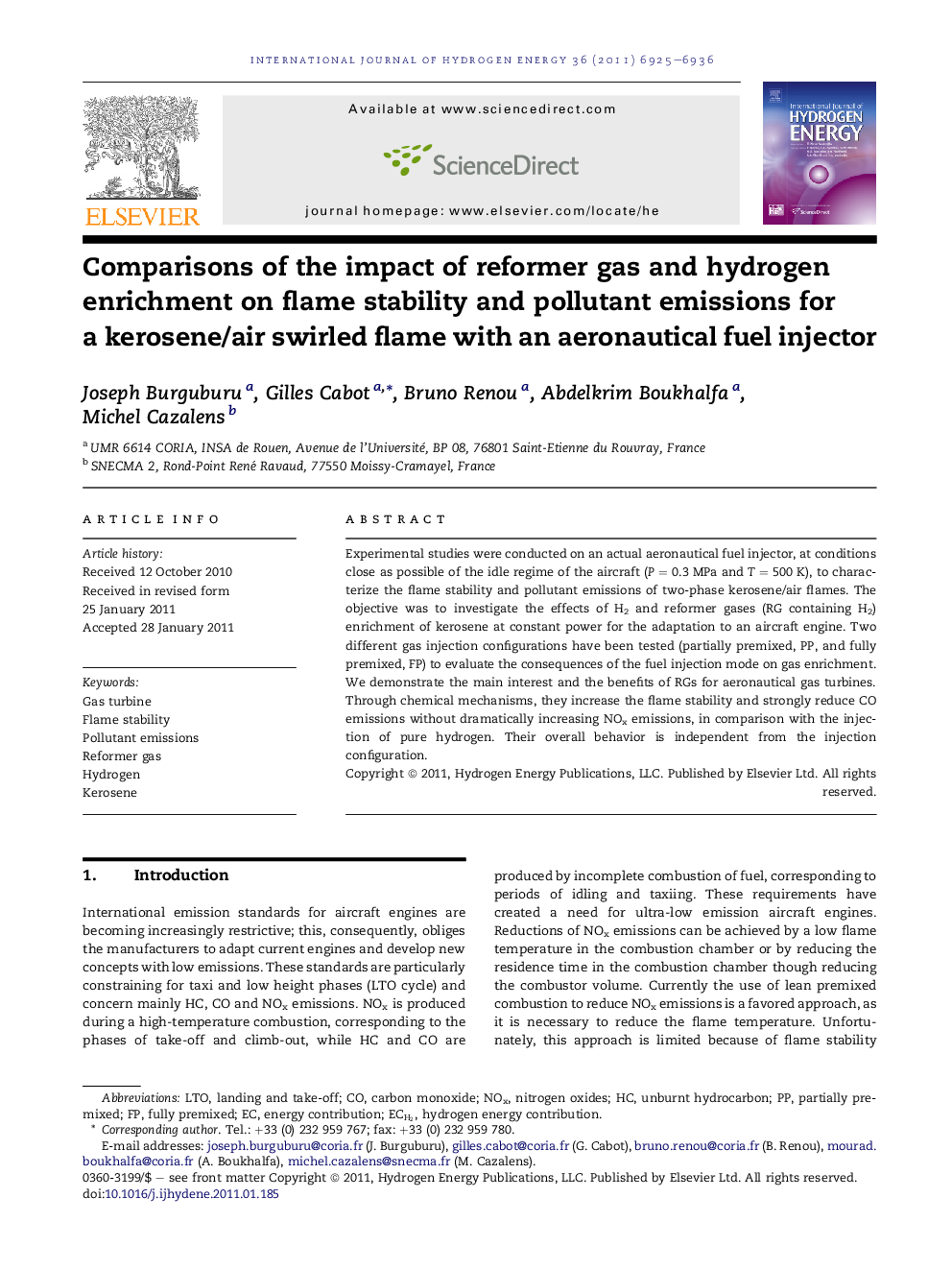| Article ID | Journal | Published Year | Pages | File Type |
|---|---|---|---|---|
| 1276051 | International Journal of Hydrogen Energy | 2011 | 12 Pages |
Experimental studies were conducted on an actual aeronautical fuel injector, at conditions close as possible of the idle regime of the aircraft (P = 0.3 MPa and T = 500 K), to characterize the flame stability and pollutant emissions of two-phase kerosene/air flames. The objective was to investigate the effects of H2 and reformer gases (RG containing H2) enrichment of kerosene at constant power for the adaptation to an aircraft engine. Two different gas injection configurations have been tested (partially premixed, PP, and fully premixed, FP) to evaluate the consequences of the fuel injection mode on gas enrichment. We demonstrate the main interest and the benefits of RGs for aeronautical gas turbines. Through chemical mechanisms, they increase the flame stability and strongly reduce CO emissions without dramatically increasing NOx emissions, in comparison with the injection of pure hydrogen. Their overall behavior is independent from the injection configuration.
► The hydrogen contained in the reformer gases enhances flame stabilization. ► Independency of the results from the reformer gases injection mode. ► ECH2ECH2 is the main parameter in the reduction of CO emissions. ► Strong correlation between ECH2ECH2 and NOx emissions.
